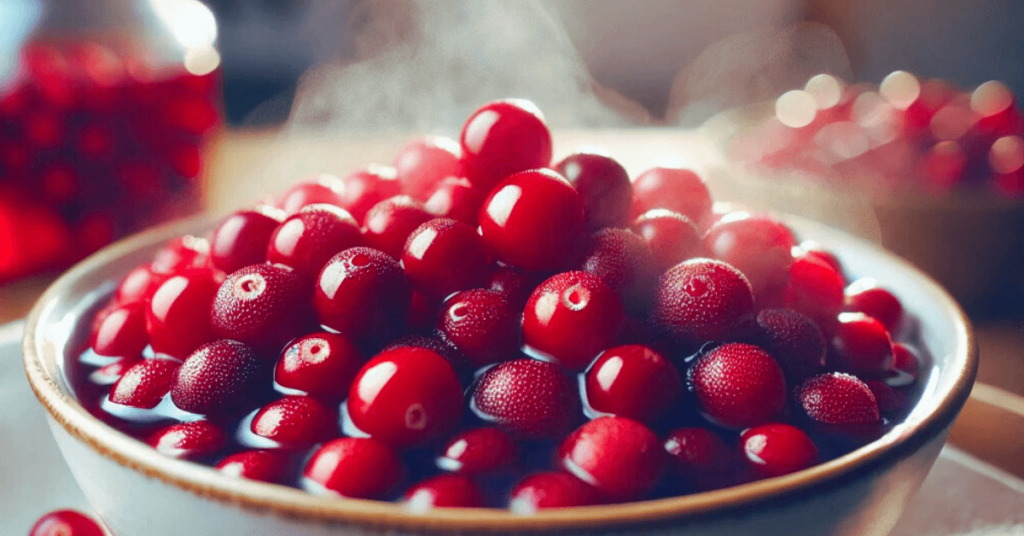How to Soften Fresh Cranberries for Baking: The Best Methods for Perfect Results
Cranberries are a deliciously tart and vibrant ingredient that enhances a wide range of baked goods. However, their natural firmness can make them challenging to work with in recipes. To achieve the perfect texture in your baked goods, softening fresh cranberries before using them is key. This guide explores the best ways to soften fresh cranberries for baking, ensuring you get the best results every time.

Why Soften Fresh Cranberries for Baking?
Before diving into the methods, it’s essential to understand why softening fresh cranberries is necessary for baking. Unlike dried cranberries, fresh cranberries retain a firm and somewhat tough texture. While this firmness is excellent for some recipes, in baked goods, softened cranberries provide better moisture distribution and blend seamlessly with the batter. The benefits of softening fresh cranberries include:
- Enhanced texture
- Better flavor absorption
- Even distribution in batters and doughs
- Prevention of excessive tartness
By using the right softening techniques, you can transform your cranberries into a perfect baking ingredient.
Simple and Effective Methods to Soften Fresh Cranberries for Baking
1. Blanching in Hot Water
One of the quickest and most effective ways to soften fresh cranberries is by blanching them in hot water.
Steps:
- Bring a pot of water to a gentle boil.
- Add the fresh cranberries and let them simmer for about 2–3 minutes.
- Once the cranberries start popping, immediately remove them from the hot water and drain.
- Rinse them with cold water to stop the cooking process.
- Pat dry and use them in your baking recipe.
Blanching softens the cranberries while preserving their bright color and natural tartness.
2. Soaking in Warm Water or Juice
If you want to infuse extra flavor into your cranberries while softening them, soaking them in warm water or juice is an excellent option.
Steps:
- Heat water or fruit juice (such as orange or apple juice) until warm but not boiling.
- Submerge the fresh cranberries in the warm liquid.
- Let them soak for at least 15–30 minutes until they become plump and soft.
- Drain the excess liquid before adding them to your recipe.
Soaking in juice not only softens the cranberries but also adds a hint of natural sweetness.
3. Macerating with Sugar
Maceration is a technique that softens fresh cranberries by drawing out their juices with sugar.
Steps:
- Place fresh cranberries in a bowl.
- Sprinkle sugar over them, using about 2 tablespoons of sugar per cup of cranberries.
- Stir and let them sit for at least 30 minutes.
- The sugar will break down the cranberries, making them softer and slightly sweeter.
- Use them directly in your baking recipes.
This method works particularly well for desserts where a touch of sweetness is desired.
4. Cooking on the Stovetop
If you need to soften cranberries quickly and enhance their flavor, lightly cooking them on the stovetop is an effective solution.
Steps:
- Place cranberries in a saucepan over low heat.
- Add a small amount of water, juice, or sugar to help them soften.
- Stir occasionally and cook for about 5 minutes until they become tender.
- Let them cool before using in baked goods.
Cooking slightly breaks down the cranberries, making them perfect for muffins, cakes, and bread.
5. Steaming for Gentle Softening
Steaming is a gentle way to soften fresh cranberries while preserving their structure and flavor.
Steps:
- Place fresh cranberries in a steaming basket over boiling water.
- Cover and steam for about 5 minutes until they become tender.
- Remove from heat and allow them to cool before using.
This method is ideal for recipes that require cranberries to maintain their shape.
Tips for Using Softened Cranberries in Baking
- Adjust Sweetness: Since fresh cranberries are naturally tart, consider adding extra sugar or honey in your recipe if needed.
- Prevent Over-softening: If using a cooking method, ensure you don’t overcook them, as they may turn mushy.
- Pat Dry Before Use: Excess moisture from softened cranberries can affect the texture of your batter, so always pat them dry before adding them to recipes.
- Mix Gently: When incorporating softened cranberries into your batter, fold them in gently to avoid crushing them.
Delicious Baking Ideas with Softened Cranberries
Once your cranberries are softened, you can use them in a variety of mouthwatering baked goods. Here are some ideas:
- Cranberry Muffins: Softened cranberries provide juicy bursts of flavor in every bite.
- Cranberry Orange Bread: A classic combination of citrus and tartness.
- Cranberry Scones: Perfectly tender with a slight tartness balanced by sugar.
- Cranberry Pie Filling: Softened cranberries create a luscious pie filling with a rich flavor.
- Cranberry Coffee Cake: A delicious way to enjoy cranberries in a moist and sweet cake.
Conclusion
Softening fresh cranberries for baking is a simple but essential step to enhance their texture and flavor. Whether you choose to blanch, soak, macerate, cook, or steam, each method offers unique benefits that suit different recipes. By following these techniques, you’ll be able to incorporate softened cranberries seamlessly into your baked goods, ensuring a delicious and satisfying result. Happy baking.

